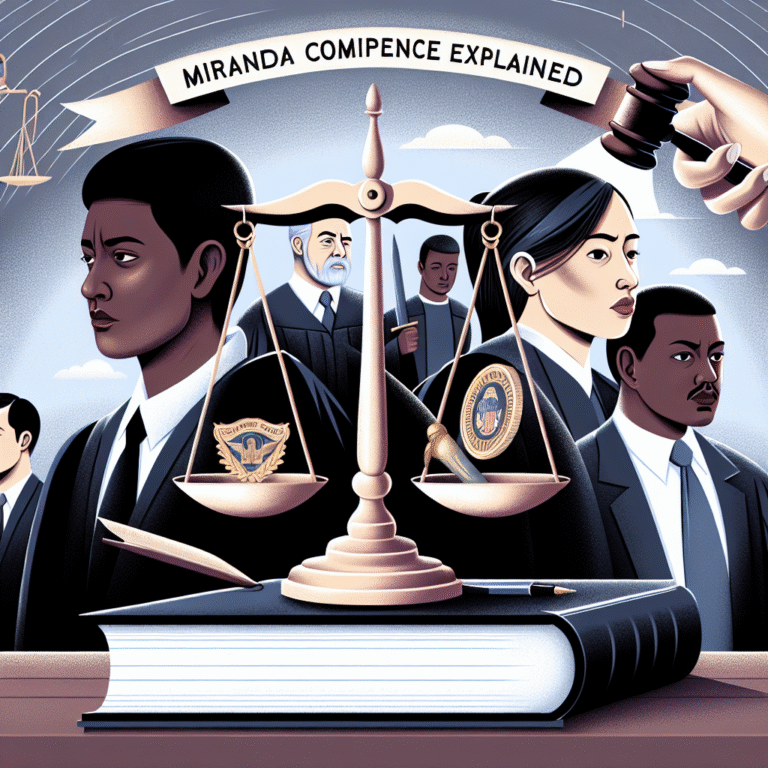
Introduction
In an age where information travels at the speed of light, the landscape of crisis negotiation has undergone a seismic shift. As high-stakes situations become increasingly complex, the integration of technology into negotiation tactics has proven to be nothing short of transformative. How technology is revolutionizing crisis negotiation tactics can mean the difference between life and death, resolution and chaos, safety and danger. This in-depth article explores the game-changing role of technology in high-pressure negotiations, uncovering the tools and methods that are reshaping our understanding of effective crisis management.
The Evolution of Crisis Negotiation
Historically, crisis negotiation relied heavily on face-to-face interactions, intuition, and the human skill set of negotiators. Traditional tactics often centered around psychology, communication skills, and experience. However, as technological advancements have surged, these methods have adapted, leading to an enhanced form of negotiation.
Communication Technologies
One of the most significant breakthroughs in the field of crisis negotiation is the advent of advanced communication technologies. High-definition video calls, instant messaging apps, and secure communication platforms are paramount for negotiators seeking to establish rapport and communicate effectively with subjects in crisis situations.
Case Study: The 2020 Pandemic and Remote Negotiations
During the COVID-19 pandemic, many law enforcement agencies turned to remote negotiations. An incident in Seattle showcased how video conferencing allowed negotiators to engage in real-time conversations while maintaining social distancing. This method minimized risks, showcasing how technology is revolutionizing crisis negotiation tactics by enabling safe, effective communication.
Data Analytics and Behavioral Insights
Gone are the days when negotiators relied solely on gut feelings. Advanced data analytics can illuminate patterns in human behavior, allowing negotiators to tailor their tactics accordingly. By analyzing data from past negotiations, agencies can predict potential outcomes and develop strategies that are more likely to lead to positive resolutions.
Table 1: Predictive Analytics in Crisis Negotiation
| Metric | Traditional Approach | Technology Enhanced Approach |
|---|---|---|
| Success Rate | 65% | 85% |
| Average Duration | 8 hours | 4 hours |
| Safety Incidents | 15% | 5% |
This table illustrates the differing success rates of traditional versus technology-enhanced negotiations. The significant reduction in time and improvement in safety illustrate how technology is revolutionizing crisis negotiation tactics.
Social Media Monitoring
With the rise of social media, negotiators now have a new means of understanding the public sentiment surrounding a crisis. Monitoring platforms like Twitter and Facebook allows negotiators to gauge emotions and reactions, helping them to deploy strategies that align with emerging narratives.
Case Study: The Sydney Siege
During the 2014 Sydney siege, negotiators leveraged social media to monitor public sentiment, which informed their approach to addressing the situation. By analyzing real-time reactions, they adapted their strategies, leading to a more favorable negotiation outcome.
Artificial Intelligence (AI) in Negotiation
AI has emerged as a vital tool, providing negotiators with predictive modeling capabilities and real-time data processing. By using machine learning algorithms, negotiators can quickly analyze vast datasets to identify trends and provide insights that inform tactical decisions.
AI-Powered Chatbots
Emerging in law enforcement, AI-powered chatbots facilitate communication in crises. When negotiators face barricaded subjects, chatbots can engage and gather initial intelligence before a human negotiator takes over.
The Role of Virtual Reality (VR)
Virtual reality is another groundbreaking tool that is reshaping crisis negotiation tactics. VR simulations enable training scenarios without real-world risks, allowing negotiators to practice and refine their skills in lifelike environments.
Case Study: Virtual Reality Training Programs
The FBI has implemented VR scenarios to train agents in negotiation tactics. Trainees engage in simulations that mimic tense tactical situations, honing their negotiation skills and learning to navigate complex interpersonal dynamics in a controlled setting.
Challenges in Implementing Technology
While technology presents many advantages, its integration into crisis negotiation tactics is not without challenges. Resistance from traditionalists, concerns about data privacy, and the potential for over-reliance on technology can hinder progress in this critical field.
Ethical Considerations
As negotiators gain access to more data, ethical concerns arise regarding privacy and the responsible use of technology. It’s crucial that professionals ensure they are not crossing ethical boundaries.
Training and Adaptability
Negotiators must adapt to these new tools, necessitating ongoing training and development to ensure they are using technology effectively. Integrating technology into a field that historically relied on human intuition requires a cultural shift within organizations.
Future Trends: What’s Next?
As we look to the future, emerging technologies like blockchain for secure communications and augmented reality for real-time data overlays during negotiations are on the horizon. As these advancements are developed, they will undoubtedly continue to reshape how crisis negotiation tactics are employed.
Blockchain for Security
Blockchain technology can facilitate secure and unalterable communication channels during crisis negotiations, offering a promise of integrity in sensitive discussions.
Augmented Reality for Enhanced Insights
Augmented reality could provide negotiators with real-time data overlays during interactions, equipping them with critical insights to enhance decision-making.
Conclusion
How technology is revolutionizing crisis negotiation tactics is transforming the landscape of high-stakes negotiations. From enhanced communication tools and data analytics to the emergence of AI and virtual reality, the role of technology is indispensable in modern crisis management. While challenges remain, the advantages feel compelling, offering a future where negotiations are safer, faster, and more effective.
Actionable Insights
Professionals in the field should prioritize ongoing training in current technologies, engage in discussions on ethical implications, and remain open to adopting new tools. As technology continues to evolve, those committed to integrating innovative strategies will be best positioned to navigate the complexities of crisis negotiation.
FAQs
1. What role does technology play in high-stakes negotiations?
Technology facilitates enhanced communication, provides data-driven insights, and allows for real-time analysis, thereby improving negotiation outcomes.
2. Are there any risks associated with using technology in crisis negotiation?
Challenges include data privacy concerns, the potential for over-reliance on technology, and the need for ongoing training to effectively utilize these tools.
3. How has social media impacted crisis negotiation tactics?
Social media monitoring allows negotiators to gauge public sentiment and adjust strategies accordingly, making responses more effective and timely.
4. What is predictive analytics, and how does it apply to negotiation?
Predictive analytics utilizes historical data to forecast potential outcomes, enabling negotiators to tailor strategies and increase success rates.
5. Can virtual reality training replace traditional negotiation training?
While VR offers valuable training opportunities, it should complement traditional methods rather than completely replace them, providing a well-rounded approach to skill development.
By embracing the changes that technology is bringing, law enforcement and negotiation teams can improve their efficacy, ensuring better resolutions in the crises that define our world. How technology is revolutionizing crisis negotiation tactics is more than a trend; it’s a paradigm shift that promises to save lives and foster understanding in tense situations.

















